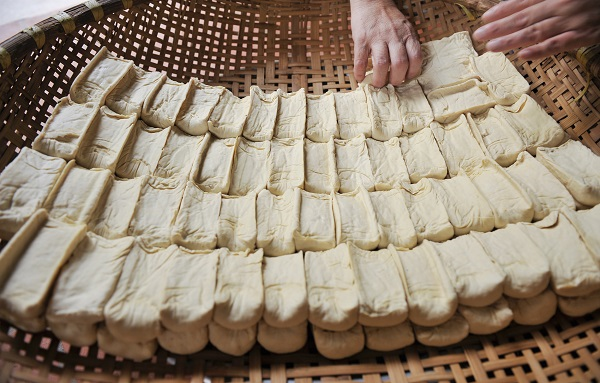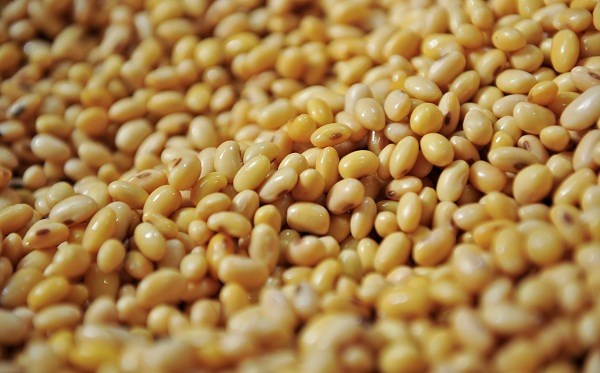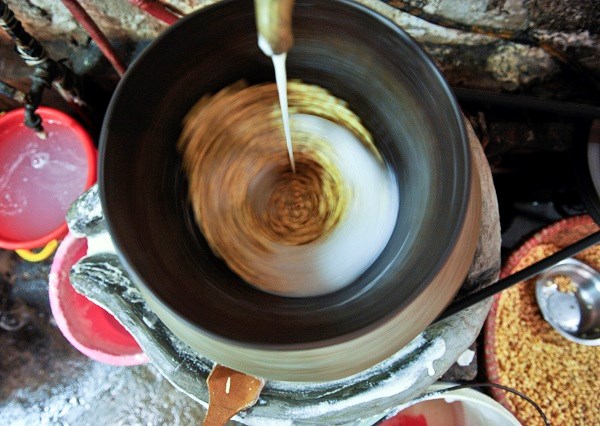Going
back to the early 20th century, tofu from Mo village was sold at each of the
entrance gates to Hanoi. Along with white tofu, Mo villagers also grilled tofu
over charcoal and sold it to peckish crowds outside tuồng cải lương theaters, and to rickshaw-pullers as a cheap
midnight snack.

The aromatic soft touch.
Tofu
from Mo village is sold in small yellow bars. While the ingredients are
identical to those used by other villages, it’s said that Mo villagers possess
some secret knowledge that makes their tofu tastier. Another explanation is
that the village’s well-water gives the tofu a distinctive flavour. Whatever
the truth, the fame of Mo tofu has spread far and wide.

The soybeans.
Today,
only a dozen established families in Mo village still make tofu. Most of the
other tofu-makers are new migrants. To produce delectable bars of tofu to sell
in morning markets, villagers must wake up very early. Yellow soybeans are
soaked the day before until their peels come off. Filtered soybeans are then
ground with a stone mortar and pestle. Water is added as the soybeans are
ground. The resulting soy milk is poured into a coarse cloth bag and squeezed
to filter it, then cooked.
The
condensed tofu is wrapped in a thin cloth bag and put into a wooden mold, then
pressed for roughly 30 minutes. The pressed tofu is removed and left to cool.
Each bar of steaming tofu is arranged on a sieve, then carried to market. Tofu
sold in the afternoon is stored in cold water to preserve it. Mo villagers
usually put their tofu into barrels of water to carry them to market.

Soybeans is ground in stone mortars to take juice.
Time-consuming
to prepare, tofu is extremely popular. Freshly-made tofu can be served without
further cooking, usually with shrimp paste or chili fish sauce. However, a more
popular treat is fried tofu, in which the tofu is dropped into hot oil until it
develops a golden crunchy outer cover. Fried tofu is served with rice or
vermicelli.
“Mo tofu served with
shrimp paste,
In the morning I ate,
in the afternoon I still crave it.
Why did I marry you?
I love Mai Dong, and
the tofu of Mo Village.”
To
satisfy demanding customers, restaurants offer novel dishes made with Mo tofu:
snail vermicelli with bananas and tofu, braised tofu with mushrooms, stir fried
tofu with chili, tofu soup with seafood, banana flower salad with tofu, etc.
Generations
of Hanoi residents have enjoyed tofu from Mo village. This simple dish evokes
fond memories for many Hanoians. Tofu from Mo village is part of this
thousand-year-old capital’s culinary culture.
By Hai Anh/ Heritage Vietnam Magazine